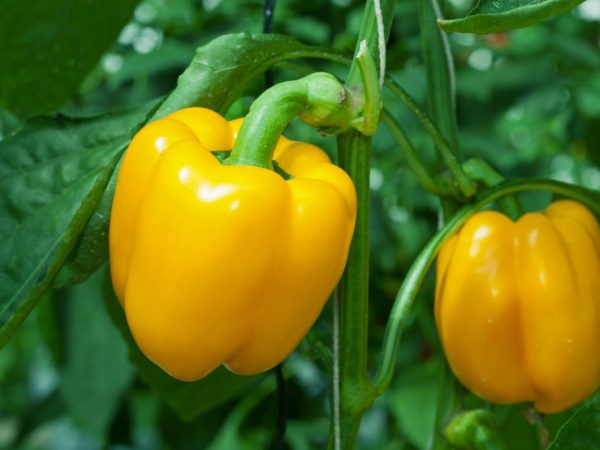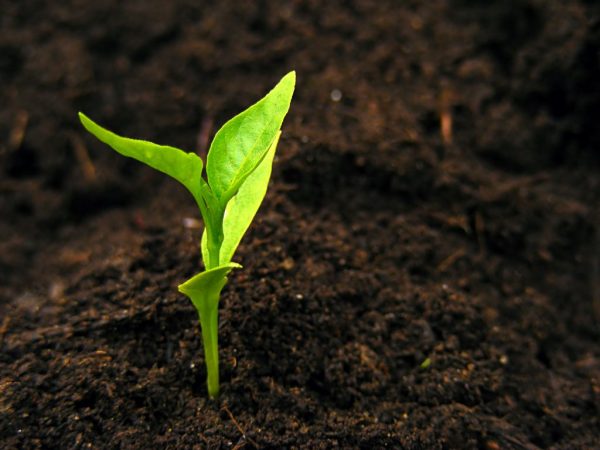Characteristics of Yellow Pepper
Yellow pepper contains many nutrients: vitamin C, potassium and phosphorus. Yellow varieties are easy to grow, have excellent taste, and are valued for their high yields.

Characteristics of Yellow Pepper
Characteristics of the variety
As the characteristics show, yellow pepper is a low-calorie variety: there are 25 kcal per 100 g of pulp. The benefits of sweet bell peppers are high: vitamin C, which is part of the vegetable, strengthens the human immune system and helps the body fight colds.
The pepper fruit is good for people with diabetes. The vegetable helps to lower blood sugar levels and strengthen the walls of blood vessels.
Yellow pepper varieties are demanding to grow. In poor climatic conditions, it is better to give preference to varieties with an early and medium ripening period. Late varieties are more suitable for conservation. To harvest a good harvest, the plant is grown by seedling method.
Popular varieties
The most popular types of yellow peppers:
- Elephant. From 1 sq. m harvest up to 7 kg. The bushes are not very lush, of medium height. The cone-shaped fruit has a long, sharp tip. Pepper mass reaches 130-150 g. It is grown outdoors. can be used for freezing, but is best for fresh salads.
- Buffalo. It is an early maturing variety, its ripening period is only 3 months after sowing in the ground. It shows good yields. Fruits are large, their weight reaches 200 g. Tall bush, stem length - up to 100 cm. Juicy flesh with walls up to 5 mm in thickness.
- Giant. Has an early ripening period (3 to 4 months). Tall and massive bushes about 100 cm high. It is recommended to tie them up so that they do not break. The average weight of the fruit is 300 g. The pulp is juicy and sweet, its thickness can reach 12 mm. The variety is versatile and great for canning.
- Hungarian. The pepper has a sweet flesh. Usually used for preservation, but also great for stuffing and as a main ingredient in various dishes. The bushes are compact and have good foliage. The crop ripens 2 months after transplanting.
- Miracle. It grows in the shape of a cube. From 1 sq. m collect up to 5 kg of ripe fruits. They have a golden yellow color, their average weight is about 200 g. They can really be grown in the open field without any problems. The variety is not afraid of temperature changes and sudden precipitation, it is recommended for use in snacks and various salads.
- Asti. Italian variety belonging to the group of early ripening, ripening period - 90-100 days. It has a massive bush up to 60 cm high. Fruits are square in shape with a weight of 200-250 g. The variety is distinguished by high disease resistance and many positive properties.
- Lamp. Produces an excellent harvest both when planted outdoors and in a greenhouse. Low bushes with a spreading top are hung with fruits, there is a yellow thick-walled flesh with a thickness of 9 mm. Pepper takes on a heart-shaped shape weighing up to 100 g. Per 1 sq. M. m accounts for 3 kg of harvest.
- Nocera.An early maturing variety of the correct pepper-shaped form, grown in open soil and film greenhouses, ripens already on the 80th day after planting. The average weight of the fruit is 200 g. The pulp is 13 mm thick and has excellent taste. The plant is resistant to viral diseases, the crop is easily transported in hot weather.
- Bell. The variety has an early ripening period. The bell ripens 70 days after the seedlings are planted in the soil. The bush reaches 70 cm and requires a garter of branches, it is intended for planting in open ground or in a greenhouse. The pulp is thick and juicy. The bell contains many vitamins.
Determining the best variety is problematic due to subjective assessment. Some use yellow peppers for preservation and freezing for the winter, others are grown for sale and just for eating.
Care
Peppers need grooming to get a good harvest. Bushes need to be watered, fed, weeded and tied up in a timely manner. According to the description, the first feeding is performed at the moment the first leaves appear on the seedlings. The last one - 2 days before planting seedlings in the ground or greenhouse.
From a lack of potassium, pepper leaves dry up and curl. In the case of a lack of nitrogen, the leaves turn gray and decrease in size over time.
To achieve the absence of shading of the branches, it is necessary to prune the peppers several times and try to make the longest shoots shorter.
It is recommended to mulch the soil with rotten straw: this allows you to reduce the amount of watering to 1 time in 10 days. Plants should be tied up immediately after weeding and mulching the soil.
Landing

Seedling growing method increases yields
The soil for growing yellow peppers must be prepared in advance. A year before planting, up to 10 kg of fertilizers per 1 sq. m. In the fall, during digging, up to 100 g of potash fertilizers are applied. 5 days before planting the seedlings, the soil is disinfected with a solution of copper sulfate.
Planting in greenhouses is carried out in early April, and in open ground in early June. This vegetable crop is subject to strong cross-pollination. During cultivation, similar varieties in the same area should be placed as far apart as possible. To get a good harvest, pepper must be grown by seedlings.
Pests
For the crop to be stable, it is necessary to protect the plant from all kinds of pests and diseases. If you do not treat plants for various diseases in a timely manner and do not destroy insects, you can lose a large amount of the crop.
The main pests:
- Aphid. The most common and dangerous pest. It settles on the leaves and sucks the juice out of them. It multiplies well in a greenhouse and in warm weather. If you do not start a timely fight against aphids, you can lose the entire crop. To destroy aphids, the bushes are sprayed with solutions of wood ash and tobacco dust, and the treatment is carried out at intervals of 5 days.
- Whitefly. This is an extremely common and very prolific pest that feeds on the sap of the bushes, as a result of which they weaken. You can find the whitefly on the bottom of the leaf. If it is not enough, you can simply wash off with water. In another case, spraying is carried out with special means or traps are used. For prevention purposes, the soil is constantly cleaned of plant residues, and the greenhouse is disinfected with karbofos.
- Slug. Slugs are capable of doing decent harm to the plant by eating huge holes in its leaves and fruits. The pest is especially active at night. To prevent the appearance of slugs, it is necessary to keep the beds clean and treat the plants with tobacco dust. Also, the pest can be scared off by mustard and ground pepper, scattered into the soil.
Diseases
Withering
Withering is caused by a fungus that lives in the soil. It can infect the entire plant in a few days. Withering can significantly slow down the growth of the bush and lead to shedding of its leaves.To prevent wilting, it is necessary to destroy plant residues in the soil at the end of the season.
Phytoplasmosis
When the plant is affected by phytoplasmosis, yellowing of the leaves, rotting of the roots, tastelessness of fruits, and dwarfism are noted. In order to prevent the disease, it is necessary to plant peppers in dry places in order to prevent stagnation of water after watering.
Pillar
Stolbur is a viral disease that stops plant growth and deforms its fruit. To prevent disease, you need to remove weeds from the soil, as well as deep loosening. In case of damage with stolbur, it is recommended to spray the plant with special agents.
Conclusion
Yellow peppers are fairly easy to grow and have good resistance to most diseases and pests. They are distinguished by a high rate of fruit ripening and the ability to get a good harvest even when planted outdoors. The benefits of a vegetable are in the presence of many vitamins.


